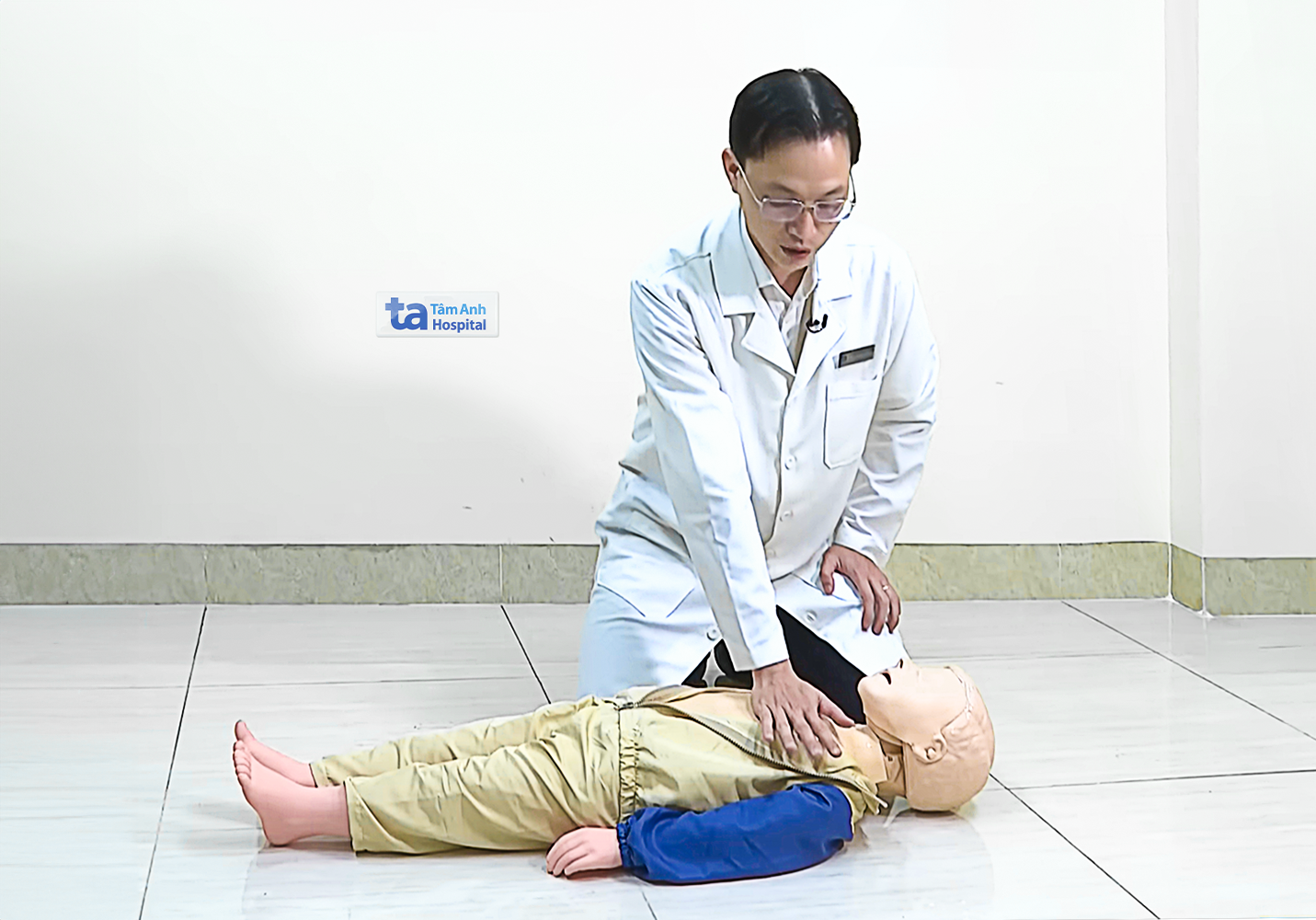During the summer, children swimming in ponds, lakes, rivers, streams, and pools are at higher risk of drowning. This occurs when water enters the airways and lungs, preventing gas exchange and leading to a lack of oxygen to nourish cells. Dr. Phan Tuan Trong, from the Emergency Department of Tam Anh General Hospital in TP HCM, provides guidance on how to handle and administer first aid to drowning children.
If you see a child sinking, try to bring them to shore using a rope, long stick, raft, or floatation device. If an older child is still struggling, you can throw them one end of a rope or a stick to pull them in. If the child is young or unconscious, have someone who knows how to swim bring them to shore, keeping their face and neck above water. If no one can swim, call for help as soon as possible.
Approach the drowning child from behind, grabbing their hair or collar to pull them backwards, keeping their face and neck above water. Once ashore, lay the child on their back in a dry, flat area. Assess their condition and perform CPR while simultaneously calling for emergency assistance.
Some families, after performing CPR on a drowning child, mistakenly believe that there is water in the child's stomach and turn the child upside down, running around with them. This unintentionally prolongs cardiac arrest, causing brain damage. By the time these children arrive at the emergency room, they are in a state of acute pulmonary edema, requiring intubation, mechanical ventilation, and targeted temperature management. The children can remain in a deep coma for days before being weaned off the ventilator and out of danger. According to Dr. Trong, inverting the child delays emergency treatment due to prolonged oxygen deprivation to the brain, and also risks the child inhaling their own vomit.
Here's the correct way to administer first aid:
Assess the child's condition: Gently shake and call the child. If they are conscious, they may blink, move their limbs, or vomit. If there is no response, they are unconscious.
First aid for a conscious child: Place one hand at shoulder level and the other hand on their cheek, with the opposite leg raised and resting on the other leg. Position the child on their side to prevent inhalation of vomit, and then monitor their breathing.
First aid for an unconscious child: Check for a carotid pulse (located in the groove between the neck and jawline, about 2 cm to the right) by gently placing two fingers on the carotid artery for 10 seconds. If there is no pulse, the child is in cardiac arrest, and CPR should be performed as follows:
Step 1: Kneel beside the child's chest.
Step 2: Locate the compression point in the center of the chest.
Step 3: Use a clean cloth to wipe any vomit from the child's mouth and nose, and remove any foreign objects.
Step 4: Place your hands interlocked for older children, or use one hand for children under 8 years old. Position your hand(s) in the center of the chest (between the nipples), keeping your arms straight and perpendicular to the body. Perform 30 compressions at a rate of 100-120 compressions per minute. Press down 5-6 cm for older children, 3-4 cm for children aged 1-8, and 1-2 cm for infants under 12 months.
Step 5: After 30 chest compressions, give two rescue breaths. Tilt the child's head back and lift their chin with one hand. Pinch the child's nose with two fingers and seal your mouth over the child's mouth, giving two strong breaths, each lasting about two seconds.
Step 6: Continue cycles of 30 chest compressions and two rescue breaths until the child's heart restarts or emergency responders arrive.
 |
Dr. Trong demonstrates one-handed CPR for a drowning child. Photo illustration: Tam Anh General Hospital. |
Dr. Trong advises against pressing on the child's abdomen during CPR, as this can induce vomiting, increasing the risk of aspiration and internal organ damage.
To prevent drowning, parents should enroll their children in swimming lessons. Children should always be supervised while swimming and wear life jackets. They should not swim beyond designated safe areas or ignore warning signs. Children on boats, rafts, and ferries should follow safety regulations. Parents should supervise young children near any body of water, even shallow ones, whether at home or on vacation.
Dinh Lam
| Readers can submit questions about children's health here for doctors to answer. |












